Indulge in the delightful flavors of Gobi Manchurian, an Indo-Chinese dish featuring crispy fried cauliflower coated in a tantalizing blend of spicy and tangy Manchurian sauce. This versatile dish can be served as an appetizer or as a main course with Hakka noodles or fried rice, making it the perfect addition to your lunch or dinner menu.
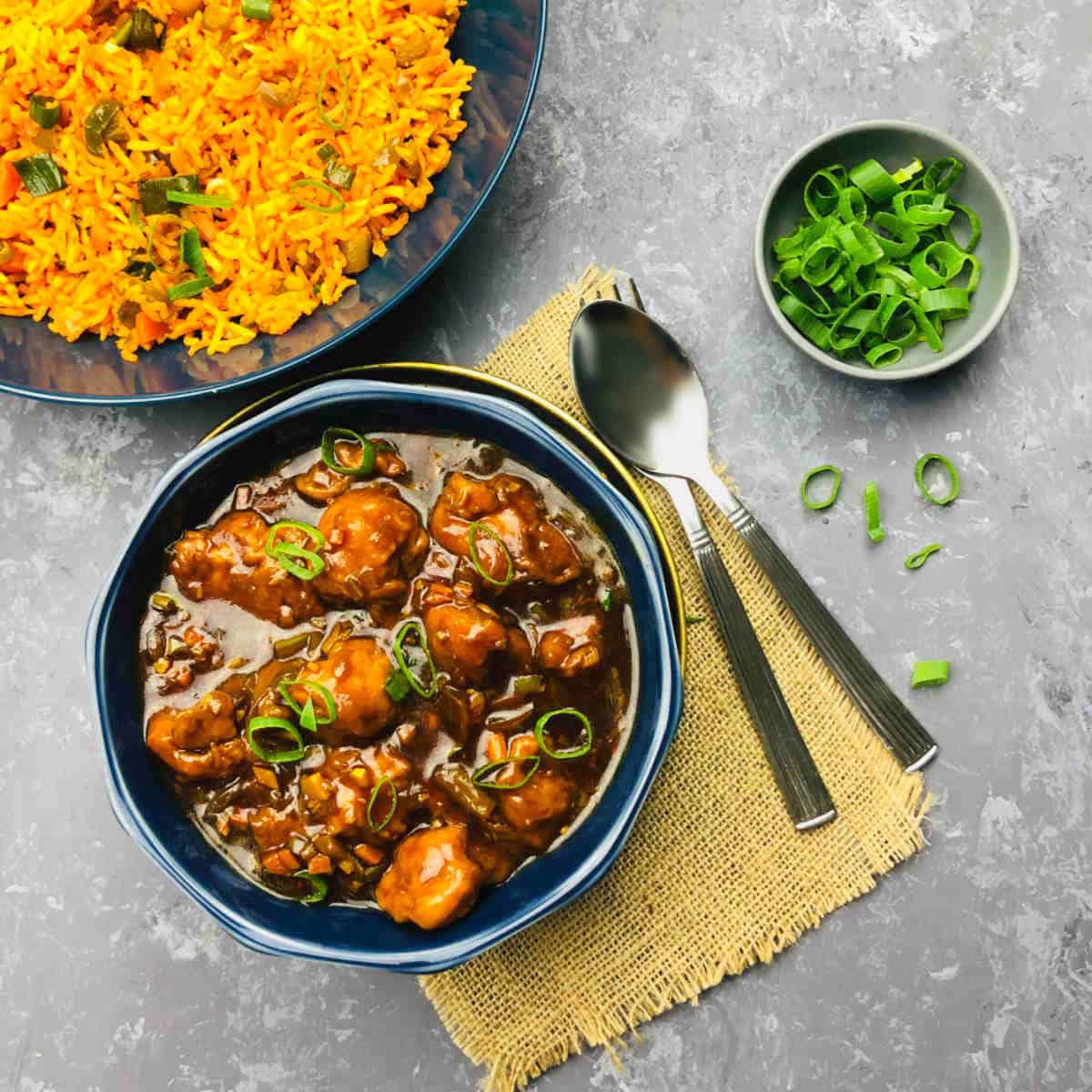
Why you will love this recipe?
- Unlike the classic gobi manchurian, which tends to have a dry and crispy texture, this semi-gravy version provides a saucier consistency that's perfect for drizzling over rice or noodles.
- While there are multiple steps involved in making this dish, it is easy to make. I have included detailed step-wise instructions and tips in this recipe to ensure that you can make this dish with confidence.
- Enjoy the delicious taste and texture of restaurant-quality Indo-Chinese cuisine in the comfort of your home.
Ingredients
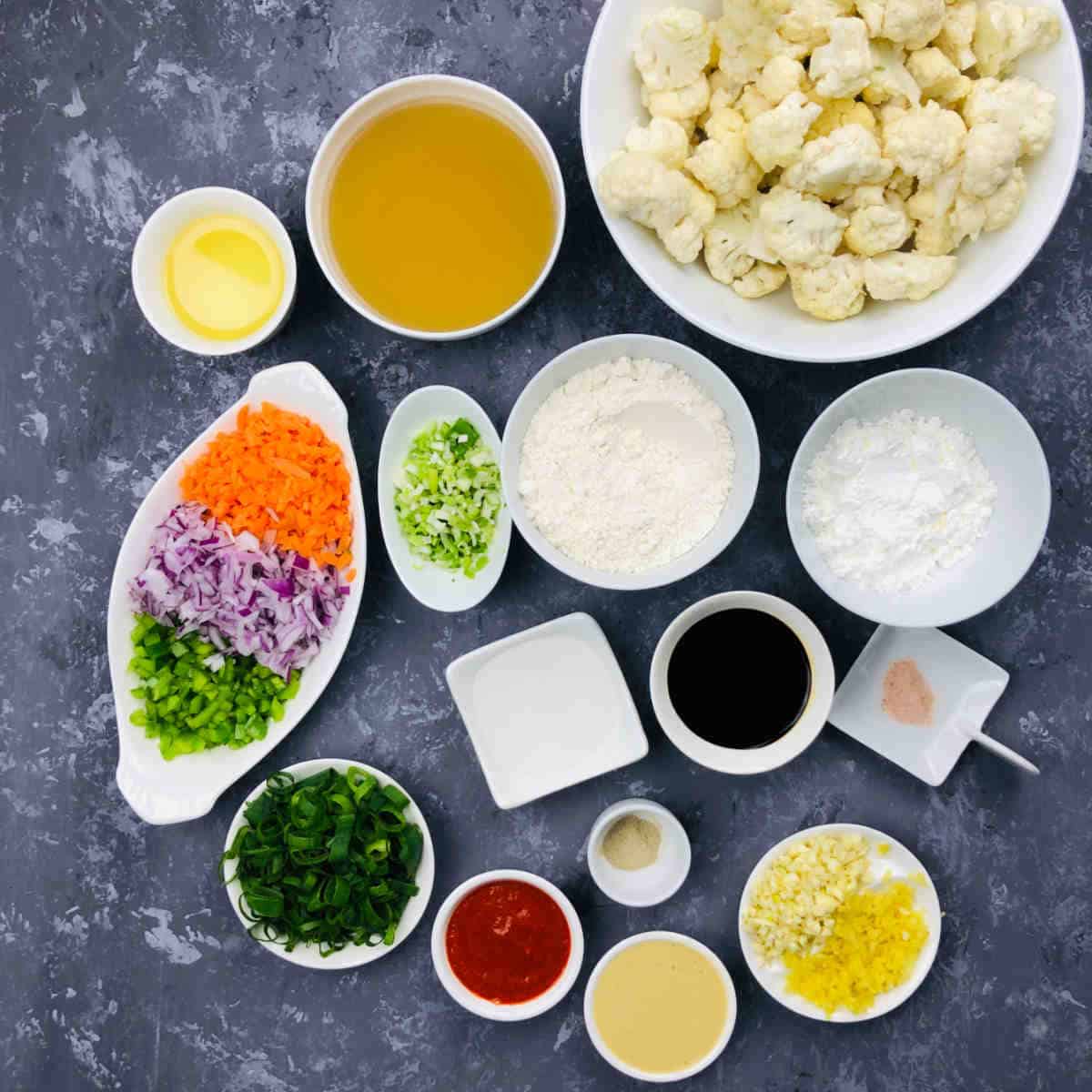
Cauliflower: Use fresh cauliflower with a tight and firm head to make this dish.
All-purpose flour and cornstarch: They are used to make the batter to coat the cauliflower florets
See the recipe card for full information on ingredients and quantities.
Variations
There are two ways to make it - dry version and with gravy or sauce. The dry version is served as an appetizer, and the gravy version is served as a side dish. This recipe is semi-dry and has some amount of Manchurian sauce. So, it can be served as both an appetizer and as a part of the main meal and is perfect for drizzling over rice or noodles.
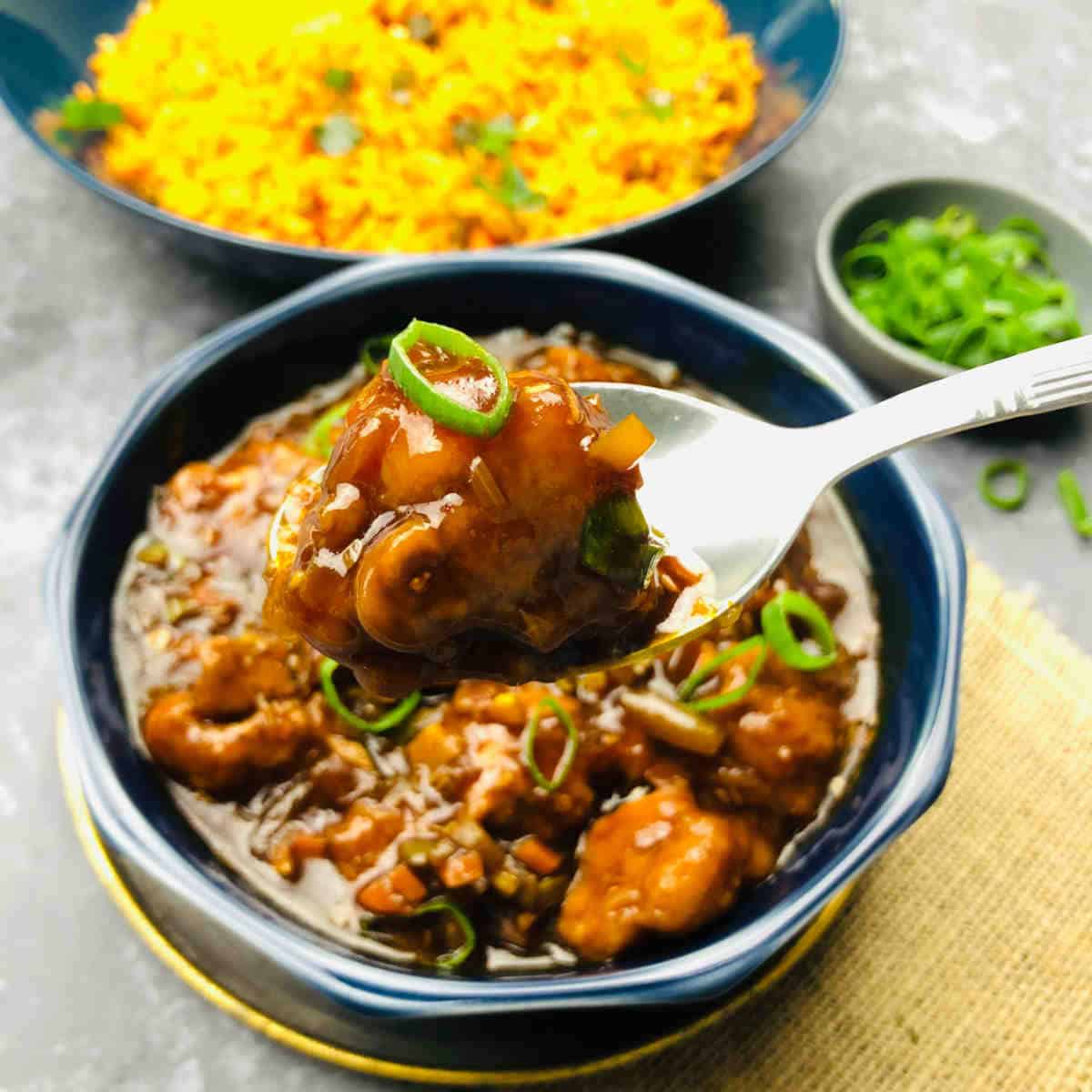
Step-by-step instructions
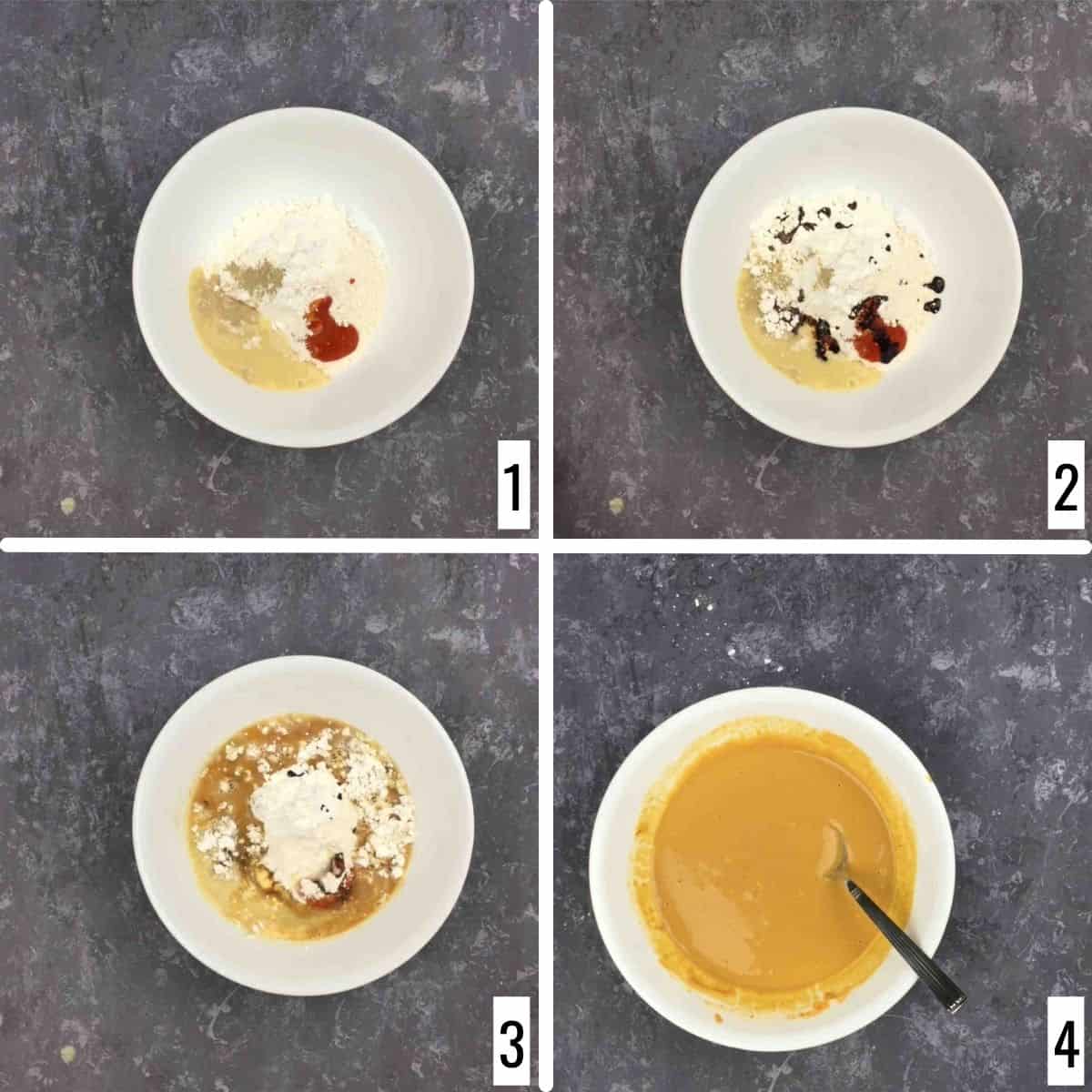
Step 1: Combine all the ingredients to make the batter in a mixing bowl - flour, corn starch, red chili paste, ginger garlic paste, white pepper, and salt (images 1 and 2). Slowly add water and make a smooth and lump-free batter (images 3 and 4).
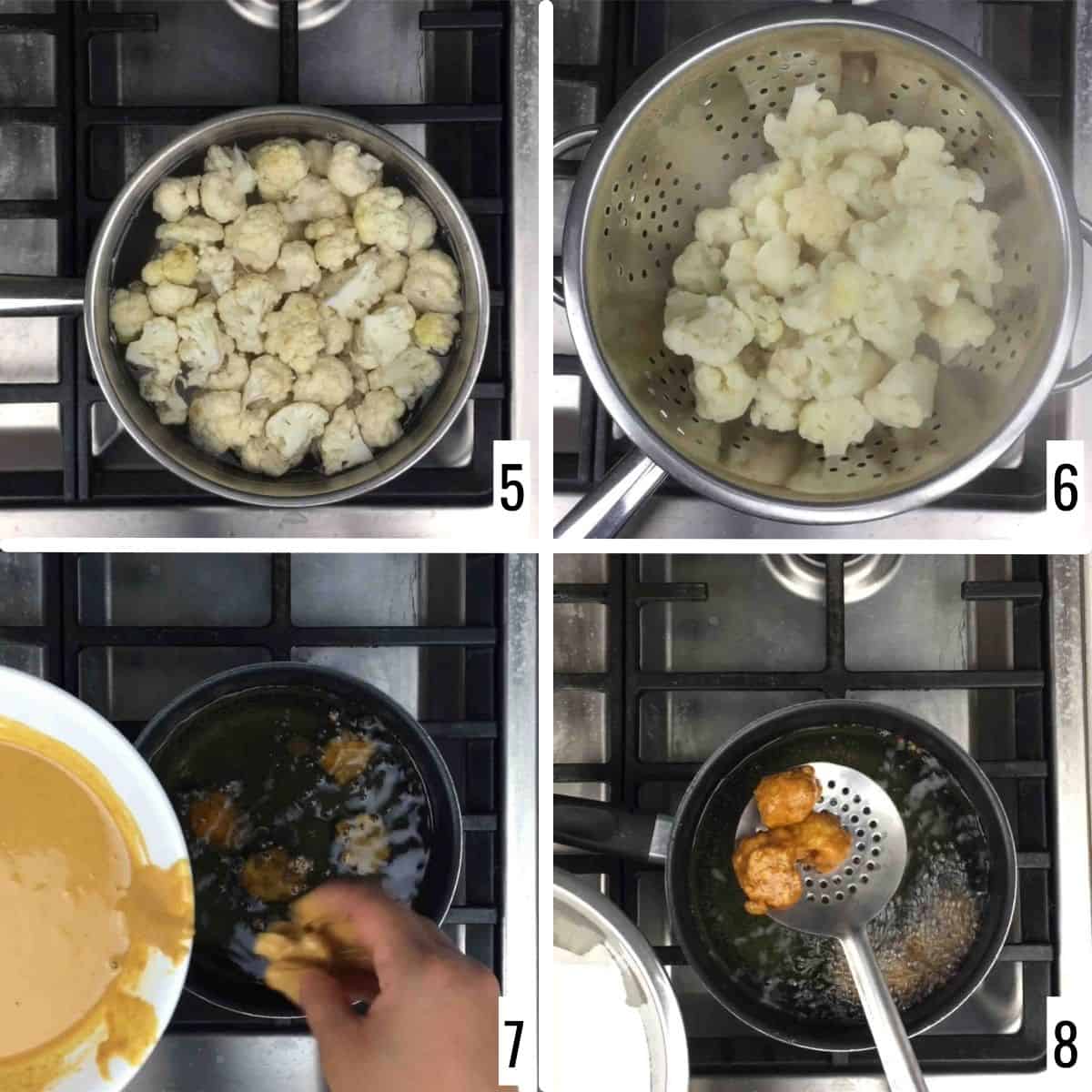
Step 2: Boil cauliflower in salted water. Drain the water and let it cool completely (images 5 and 6).
Step 3: Dip the blanched cauliflower in the thick batter and deep fry them in hot oil until they are crispy and golden brown (images 7 and 8). Drain them on a paper towel and set them aside.
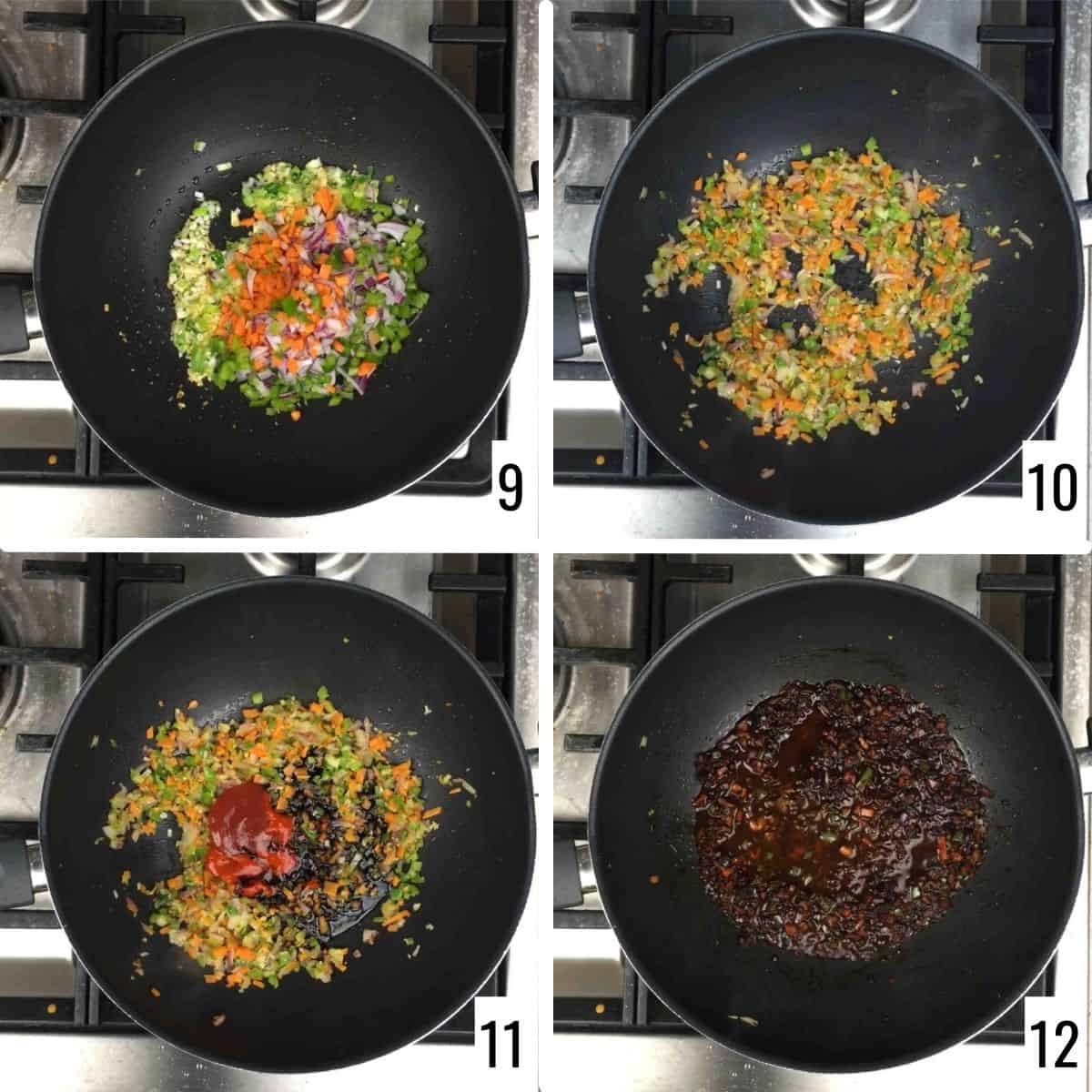
Step 4: Heat oil in a large wok/kadhai. Add ginger, and garlic and saute for a few seconds. Next, add scallions and mix well. Add onion, bell peppers, and carrots. Stir fry for 1-2 minutes (images 9 and 10). Add red chili sauce, tomato ketchup (tomato sauce), dark soy sauce, and vinegar. Mix well (images 11 and 12).
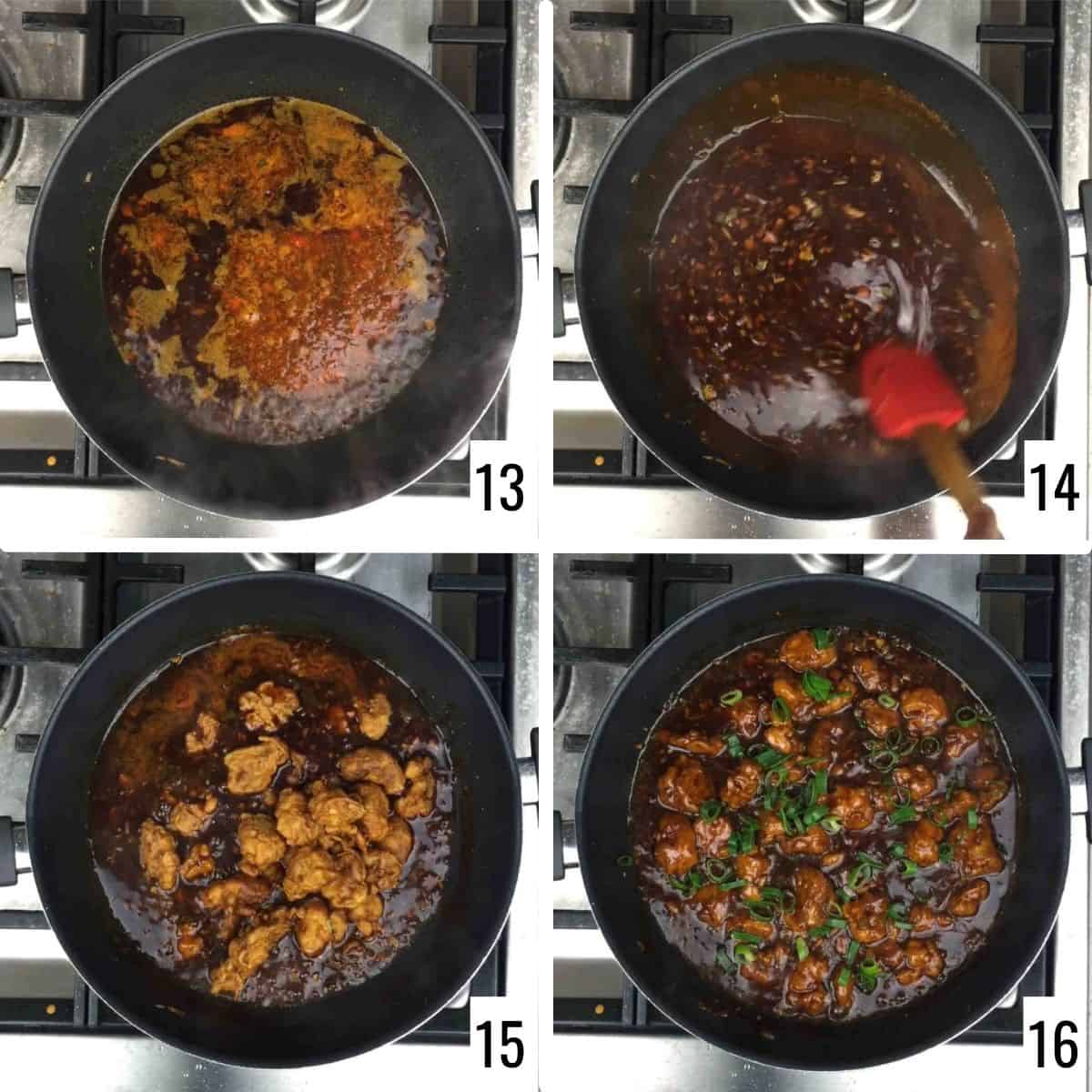
Step 5: Add vegetable stock and bring it to a boil (image 13). Add the cornflour-water mixture to the gravy. Let it simmer on medium heat until the gravy thickens slightly (image 14).
Step 6: Add the fried gobi florets and mix well. Garnish with spring onions and serve hot (images 15 and 16).
Expert Tips
Use vegetable stock to make the Manchurian gravy instead of water. While water can also be used, making the sauce with vegetable stock gives the best taste to the gravy.
While cauliflower is the main vegetable in this dish, adding onion, carrots, and bell pepper gives a great texture and crunch to the dish. Make sure they are chopped finely and stir-fried briefly so they retain their crunch.
I use dark soy sauce to make this dish, which gives the dish its deep color. However, you may use light soy sauce or a mix of both. Soy sauce is quite salty. So, adjust the salt level accordingly.
What to serve with gobi Manchurian?
Rice: Serve gobi Manchurian with rice, such as jasmine rice, basmati rice, or white rice.
Fried rice varieties: Instead of plain steamed rice, pair cauliflower Manchurian with a variety of fried rice options such as egg fried rice, vegetable fried rice, or schezwan fried rice for a complete Indo-Chinese-inspired meal.
Noodles: It can also be served with noodles, such as chow mein noodles, lo mein noodles, or Hakka noodles.
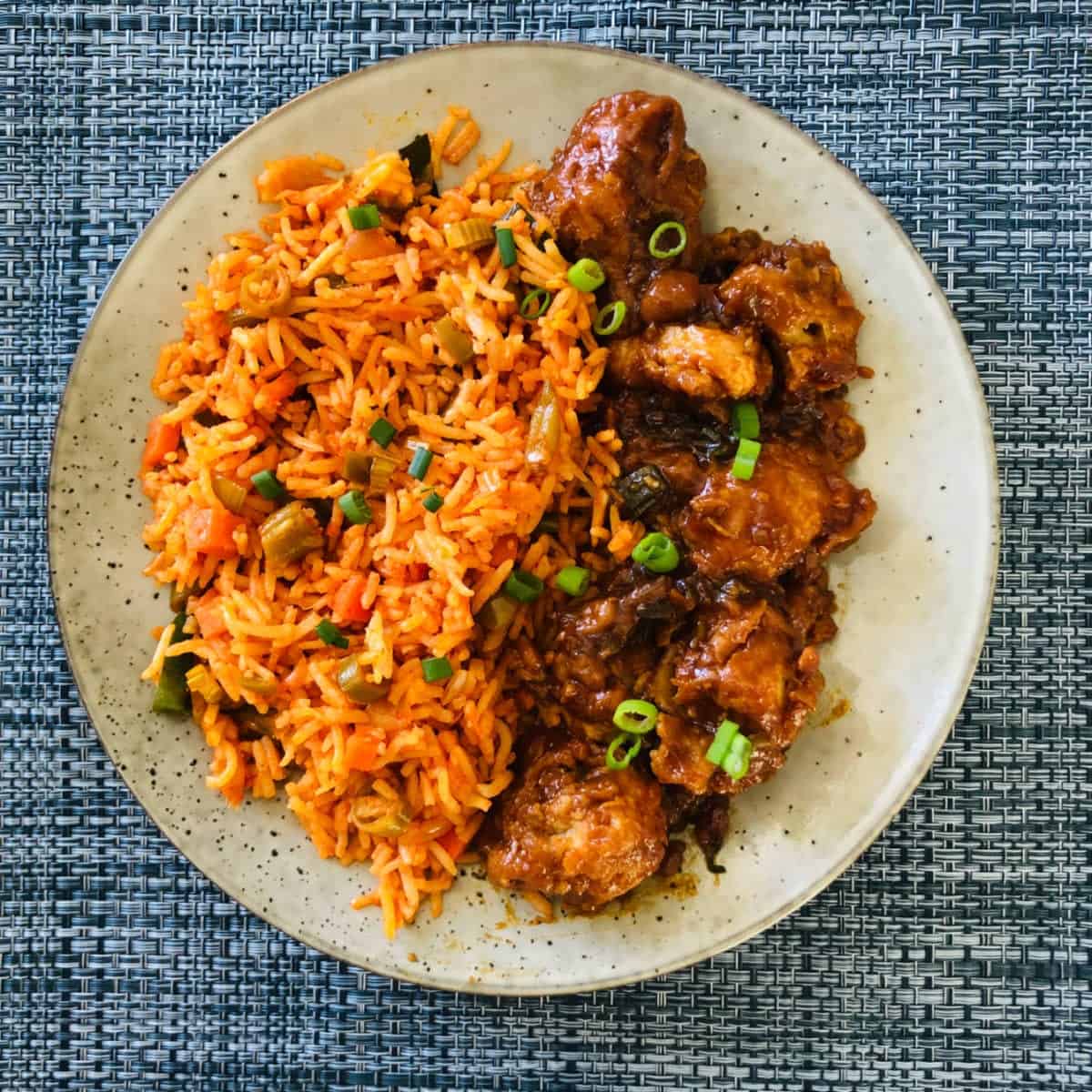
Recipe FAQs
Indian-Chinese or Indo-Chinese food is a distinct fusion cuisine where Chinese seasoning and cooking techniques are adapted to Indian taste buds. Popularly known as Desi Chinese, they are one of the most famous forms of street food in India. This cuisine originated from the Chinese community in Kolkata and is very famous within and outside India. Chinese sauces like soy sauce and vinegar combined with Indian ingredients like ginger, garlic, and chili create the most unique and delicious dishes.
To make it gluten-free, replace the all-purpose flour used to deep fry the cauliflower with rice flour.
Red chili paste is a common ingredient in Indo-Chinese cooking and is made using dried chilies. To make it, soak one cup of dried chilies in hot water for 15-20 minutes. Drain the water and add ¼ cup vinegar. Grind it into a smooth and thick paste (add a little water if needed). You can use the water in which the chilies were soaked for grinding.
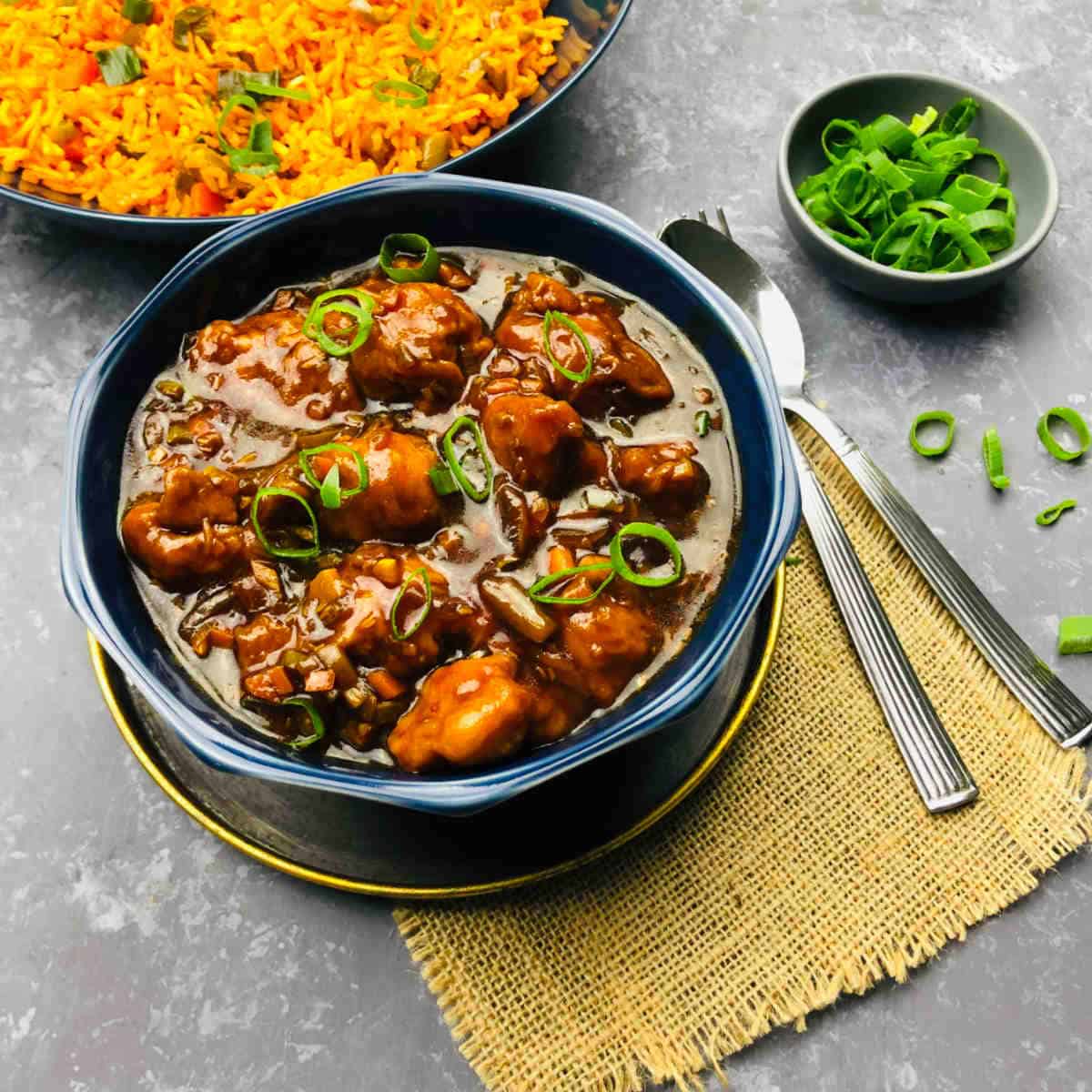
More Indo-Chinese Recipes
If you tried this Gobi Manchurian Recipe or any other recipe on my website, please leave a ? star rating and let me know how it went in the ? comments below.
Recipe card

Gobi Manchurian
Ingredients
- 1 medium cauliflower
For the batter:
- 6 tablespoon all-purpose flour
- 4 tablespoon cornstarch
- 1 teaspoon white pepper
- Salt to taste
- 1 teaspoon red chili paste see notes
- 1 tablespoon ginger garlic paste
- 1 tablespoon dark soy sauce
- Oil for deep-frying
For the Manchurian gravy/sauce:
- 2 tablespoon oil
- 1 inch ginger finely chopped
- 3 cloves garlic finely chopped
- ¼ cup scallion finely chopped
- 1 small onion finely chopped
- 1 small carrot finely chopped
- ¼ cup bell pepper finely chopped
- 1 tablespoon red chili paste
- 2 tablespoon tomato ketchup
- 2 tablespoon dark soy sauce
- 1 tablespoon vinegar
- 2 cups vegetable stock
- 1 tablespoon cornstarch
- 1 teaspoon white pepper
- Salt to taste
- 2 tablespoon green onions
Instructions
Frying the cauliflower florets:
- Boil water in a large stockpot. Once it comes to a rolling boil, add 1 teaspoon salt.
- Add the cauliflower florets and let it simmer for 4 minutes.
- Strain the cauliflower and let it cool completely.
- Combine all the ingredients to make the batter in a bowl - flour, cornstarch, red chili paste, ginger garlic paste, white pepper, and salt.
- Slowly add water and make a smooth and lump-free batter.
- Heat oil for deep-frying.
- Dip the blanched cauliflower in the batter and deep fry until they are crispy and golden. Set aside.
Making the Manchurian gravy/sauce:
- Heat oil in a large wok/kadhai. Add ginger, and garlic and saute for a few seconds.
- Add scallions, onion, bell peppers, and carrots. Stir fry for 2-3 minutes.
- Add red chili paste, tomato ketchup, dark soy sauce, and vinegar. Mix well.
- Add vegetable stock and bring to boil.
- Meanwhile, mix 1 tablespoon of corn flour in ¼ cup of water to make a slurry.
- Add the slurry to the sauce. Add salt and pepper, and mix well.
- Let it simmer until the gravy thickens slightly.
- Add the fried cauliflower florets and mix well. Simmer for 2-3 minutes.
- Garnish with green onions and serve hot.

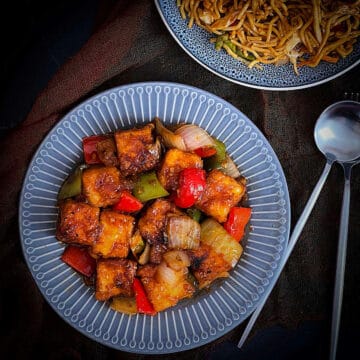
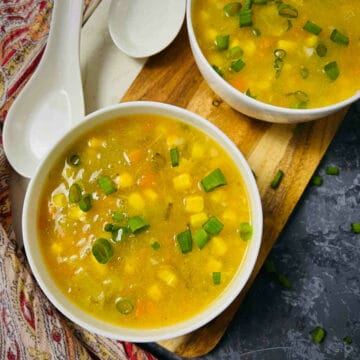
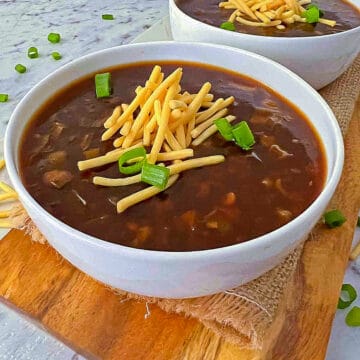
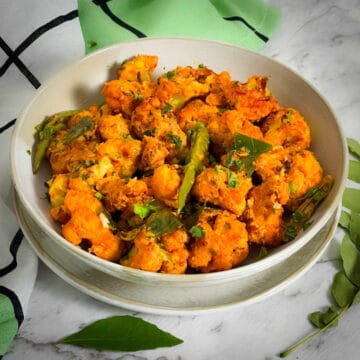
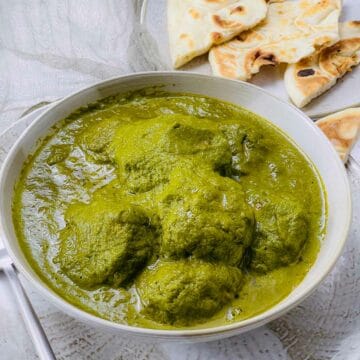
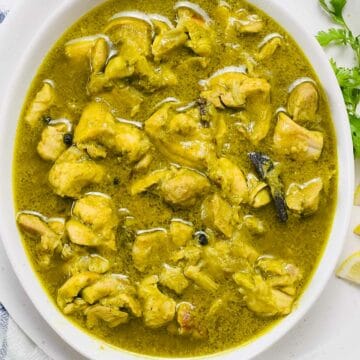

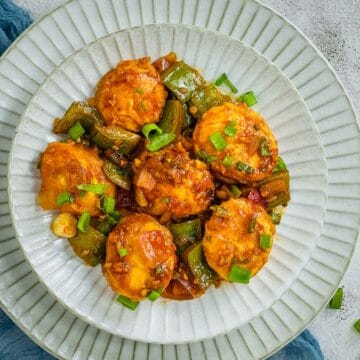
Comments
No Comments